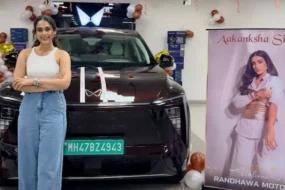- Home
- Automobile
- Mahindra BE6 Owner Highlights ...

Despite growing adoption and government support for electric vehicles in India, the charging infrastructure continues to fall short—something a Mahindra BE6 owner recently experienced firsthand in Delhi.
In a video shared by YouTube channel ReGen Life, a lawyer and BE6 owner set out for Patiala House Court with just 16% battery charge, hoping to plug in at a government-operated charger—more affordable than private alternatives. However, upon arriving, he found two chargers (DC and AC) installed in the judges’ parking area, both non-functional. More frustratingly, the public and lawyers’ parking zones had no charging stations at all.
Even if those chargers had been operational, access was blocked by internal combustion engine (ICE) vehicles—highlighting widespread public ignorance about EV infrastructure.
After wrapping up his work, the owner began searching across Delhi for a functioning charger. Some stations were already in use, while others—particularly the Delhi Government’s “Switch” charging points—were either damaged, unpowered, or physically blocked by parked vehicles.
With his BE6’s battery dropping to 10%, the situation grew critical. He made his way to a Delhi Transport Corporation (DTC) depot, hoping to charge at the multiple DC fast chargers located there. Unfortunately, these chargers weren’t accessible to the public, and security personnel denied him entry.
Now down to 7% battery, he abandoned the search and headed for the nearest Mahindra service center, where he finally managed to recharge using a 30 kW fast charger.
This experience underscores a stark reality: while EV ownership in India is on the rise, basic infrastructure and public awareness still lag dangerously behind.















